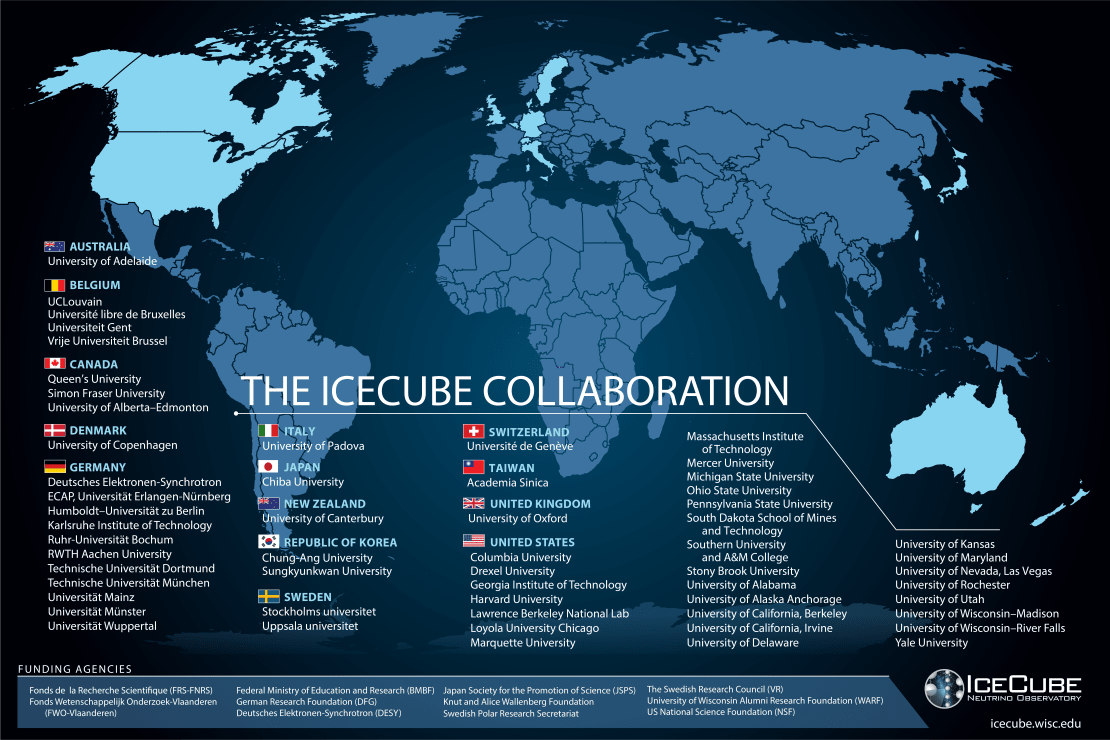On the surface, building the IceCube Neutrino Observatory seems straightforward. A bunch of people traveled to the South Pole, drilled holes in the ice, and sent sensors down the holes. The reality is far from simple.
The design and development of the detector was only possible thanks to the contributions of many individuals and institutions. Collectively, those individuals and institutions are known as the IceCube Collaboration.
Currently, the collaboration includes more than 450 people from 58 institutions in 14 countries. It began in 1999 with the submission of the first IceCube proposal, and many of the original members are still active on the project.
Over the years, the IceCube Collaboration has worked together on every aspect of the detector. Senior scientists, graduate students, technicians, software specialists, drillers, and engineers came together from around the world to build what is now the world’s largest neutrino detector.
One remarkable aspect of the construction phase was the wide distribution of the hardware development across the collaboration, from the main boards at Lawrence Berkeley National Lab to the construction of IceTop tanks and freeze control units at the University of Delaware. Production and testing of digital optical modules were done at three assembly facilities: at the University of Wisconsin–Madison, in Sweden, and at DESY in Germany.
Although construction is complete, the project is far from over—there is science to be done. The collaboration continues to analyze data, discuss results, and plan future developments. While the logistics (semiannual meetings and weekly phone calls!) involved in maintaining efficient communication within the collaboration may seem cumbersome, the input of a wide variety of people fuels innovation and creativity.
Former spokesperson Prof. Tom Gaisser highlighted the benefits of a collaboration, saying, “The advantage of a collaboration is that working together makes it possible to accomplish what would be difficult or impossible for a few individuals or a single institution. In a successful collaboration the whole is more than the sum of its parts, and IceCube has already proved to be an outstandingly successful collaboration.”
While the official IceCube Collaboration is limited to institutions and organizations that participate in the science, the IceCube project is supported by an even wider group. Construction and operation of IceCube would not be possible without support from funding partners like the National Science Foundation (NSF), led by the Office of Polar Programs and the Physics Program, along with funding agencies in Sweden, Belgium, Germany, and other countries.

